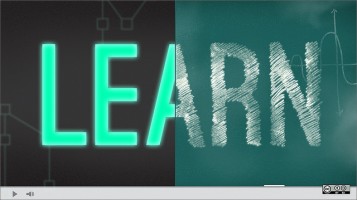What the field needs to learn and “unlearn” about developing arts audiences
by Jill Robinson
This post is part of a series of collaborations with TRG Arts and is cross-posted to their blog Analysis from TRG Arts.

Photo: opensource.com (CC BY-SA 2.0)
I recently delivered a keynote at the Conferencia Anual de Marketing de las Artes (Annual Conference on Marketing the Arts) in Madrid and Barcelona, hosted by Spanish consulting firm Asimetrica. The focus of this year’s convening was “Cambio de Mentalidad,” about changing mentalities about marketing, and audiences, in the arts. Speakers were from many countries, and had many different perspectives. But one that arose consistently was a fixation that arts managers from all over the world shared.
They were obsessed with new audiences.
I suppose that it shouldn’t have come as a surprise to me, given the fascination with new audiences we have here in the U.S. and in Canada. But, hearing this international audience discuss the challenge of attracting new audiences in Spanish, English, and various other languages brought it home to me again.
In my keynote, I urged participants: Before you invest everything you have in acquiring new audiences, make sure you’ve got a solid retention strategy for current participants. In fact, our conference host urged me to press this issue. Why? In the European and South American countries these administrators were from, the basics of retention are almost non-existent. In most organizations I talked to, patron contact information isn’t collected, marketing is expensive and broad-based, and administrators have no idea if the patrons they attract ever return.
There are exceptions, of course. The Orquesta Nacional de España and Opera Barcelona at the Gran Teatre del Liceu are two exceptional examples of organizations that are working hard to motivate loyalty and maximize revenues for their organizations. But on the whole, much of the conversation at this conference was about how we can, as a field, attract new audiences in new ways. I’ll be honest; the technology and engagement initiatives that the field has invented for new audiences are downright sexy. I learned about texting with curators in real time at museums, inter-generational social exchanges after productions, and new models for arts presentation in completely under-served communities.
These ideas were exciting and, at the same time, I felt frustrated. As I reflected on this, I realized: I’ve been working in this field since the late 80s, and in the US we, too, have been reasonably obsessed with new audiences for at least that long. It’s obvious that new audiences are important. But retention? This subject never seems to have the same appeal to our field. And to me and us at TRG, a lack of or subordinated focus on the relationships we have with current patrons seems almost…irresponsible.
How can we get unobsessed? At TRG, we look to data as the neutralizing force in this sometimes emotional issue. But I’m reminded every day that one has to want to learn. And learning takes an investment in time, in listening, in testing and trying, and engaging in dialogue. Educating ourselves as arts managers is one of the toughest tasks we have. And yet, the environment in which we work is constantly changing, so best practices must evolve too. So, we’ve got to keep learning—and unlearning, as a result.
Here are a few things that our field needs to learn and unlearn about developing arts audiences:
UNLEARN
New is good; old/existing is bad. New audiences are important, but they are not our only audience members. To be sustainable, you must develop loyal, fanatical advocates from both existing and new audience members. Also, don’t assume new ideas are automatically better ideas. Many established best practices still work, and some new ideas may cost more than they’re worth. Test, gather data, and find out what works for you.
The traditional business model is dead. Is the way we do business changing? Absolutely. Certainly, the channel and delivery mechanisms have evolved and are evolving. But, where the money comes from stays basically the same. It comes from patrons. Arts organizations exist to bring art and audiences together. While arts organizations serve audiences, audiences support arts organizations.
Community engagement won’t help the bottom line. Community engagement is often seen as fuzzy, something that we can’t measure and shouldn’t try. For this reason, some arts professionals have no expectation that it should result in increased revenue for our organization. That’s unfair. Community engagement is a long-term revenue strategy and should be an area of investment. (See more on balancing short and long term strategies here.)
LEARN: The modern 3 R’s of arts marketing
ROI matters. Return on investment, cost of sale, bang for your buck… What you call it doesn’t matter. What matters is that you measure how much you get for much you spend. Many arts managers measure ROI on campaigns in one way or another. I’d encourage you to also look at ROI on different types of patrons, which leads me to the next “R”…
Retention rules. The most important thing today’s marketers can do is learn to retain patrons and develop their loyalty. As patrons return again and again to your organization, they generate more revenue and are much less expensive to keep. Even if you get every person in your community to come once to your organization, your business cannot be sustainable unless you retain some of those people and work to develop a core of engaged, loyal advocates.
Reach out across departments. Community engagement folks, don’t assume marketing is irrelevant to you. Marketing folks, same deal with community engagement. And, both should work with development, box office, and—yes—even artistic to build loyalty among audiences, both old and new.
———————————————————————————————–
 Jill Robinson is President and CEO of TRG Arts, an international data-driven consulting firm dedicated to creating sustainable arts and cultural organizations. Under Jill’s leadership, TRG has translated its ongoing study of arts consumer transactions into knowledge that achieves improved revenue results for clients and that serves as a resource to the industry at-large. Jill has expanded the scope of TRG services to all arts genres throughout the United States, into Canada and abroad to Australia and the United Kingdom.
Jill Robinson is President and CEO of TRG Arts, an international data-driven consulting firm dedicated to creating sustainable arts and cultural organizations. Under Jill’s leadership, TRG has translated its ongoing study of arts consumer transactions into knowledge that achieves improved revenue results for clients and that serves as a resource to the industry at-large. Jill has expanded the scope of TRG services to all arts genres throughout the United States, into Canada and abroad to Australia and the United Kingdom.
A frequent panelist and session leader at arts conferences throughout North America, Jill also helps inform the field through TRG’s webinars, summits, and as a blogger on Analysis from TRG Arts. Jill serves on the board of the National Center for Arts Research. This fall she will deliver a keynote at the Annual Conference on Marketing the Arts in Madrid, and give a masterclass in London for arts leaders.
Engaging Matters will be taking next week off for Thanksgiving. Enjoy the start of the Holiday season.

[…] Learn-Unlearn What the field needs to learn and “unlearn” about developing arts audiences by Jill Robinson … read more AJBlog: Engaging Matters Published 2015-11-17 In the wavelength Audience engagement – it’s a weak strategy. Never mind that it can seem to work. A friend sent me notes from the National Arts Marketing Project Conference, with details of the Cleveland Public Theater, and its impressive season, full of plays on subjects that just seem to scream contemporary relevance. But still they wanted to boost attendance on slow nights. … read more AJBlog: Sandow Published 2015-11-17 Tom Campbell of Metropolitan Museum Responds to L’Horreur in Paris (with video) It wasn’t as scary as the sight of heavily armed police in a bullet-proof vests Saturday night at Lincoln Center … But (without giving away the details) it was clear to me, when I entered the garage of the Metropolitan Museum to attend its press lunch today, that security measures there had been tightened. … read more AJBlog: CultureGrrl Published 2015-11-17 [ssba_hide] […]
[WORDPRESS HASHCASH] The comment’s actual post text did not contain your blog url (http://www.artsjournal.com/engage/2015/11/learn-unlearn) and so is spam.